A successful water shoot needs everything to fall into place: the right facilities, skilled crews, and a financial environment that delivers the whole package at a reasonable price. It’s a balancing act that Flanders is good at, attracting underwater shoots for two major international co-productions last year alone.
Both Kursk, the latest feature from Thomas Vinterberg, and prestigious Norwegian TV series State of Happiness chose AED Studios in Lint for their underwater work. Meanwhile a new water studio is being built at Vilvoorde, near Brussels, which will take Flanders’ capacity for water work to a whole new level.
A submarine disaster
Kursk follows events that unfolded in 2000 after explosions on board a Russian submarine sent it to the bottom of the Barents Sea. The film shows the sailors’ fight for survival in the stricken submarine, while their families on land battle political obstacles to save them.
The project first caught the eye of coproducer Belga Films when Matthias Schoenaerts was cast in the role of the Kursk’s captain. A major Flemish star, his involvement would not just be an audience draw, but also an opening to involve the Belgian Tax Shelter. “We just had to co-produce this one,” says Christophe Toulemonde, Belga’s head of productions.
The company has a long history as a distributor in Belgium, but only started co-producing three years ago. “The idea is to produce the content we would like to distribute, and our focus is on high-quality movies for a wide audience.”
Kursk fits the bill, combining Vinterberg’s reputation as a director with an exciting story and acting talent such as Schoenaerts, Colin Firth and Léa Seydoux. It also meant familiar partners in lead producer Via Est from Luxemburg and for international sales, EuropaCorp, whose films Belga has distributed in the Benelux for many years.
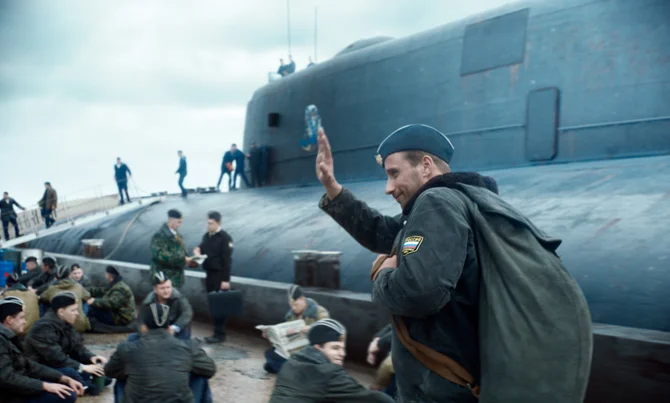
Bringing Kursk to Flanders
Discussions about where to shoot the film initially included Canada, South Africa and Romania. Aware of the potential of the project, Belga asked to make the case for bringing the production to Belgium. “What made that possible was the unique combination of financing, the quality of the crew and the quality of the facilities,” Toulemonde says.
On the finance side, the production could draw on the Tax Shelter and the regional economic funds, with Screen Flanders, Screen Brussels and Wallimage all making contributions.
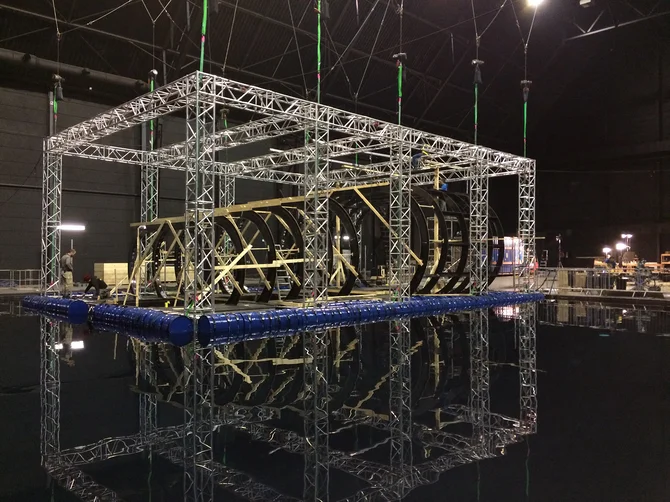
Meanwhile AED Studios offered conventional studio space and a large water tank. “You don’t have so many tanks in Europe that are inside, with filtered water, and big enough for such a project.”
The main challenge was building the submarine set so that it would resist the water and the stresses of the shoot. “How we would construct it, set it in the water, and move it in and out of the water in spite of its 20-ton weight were big issues,” Toulemonde explains.
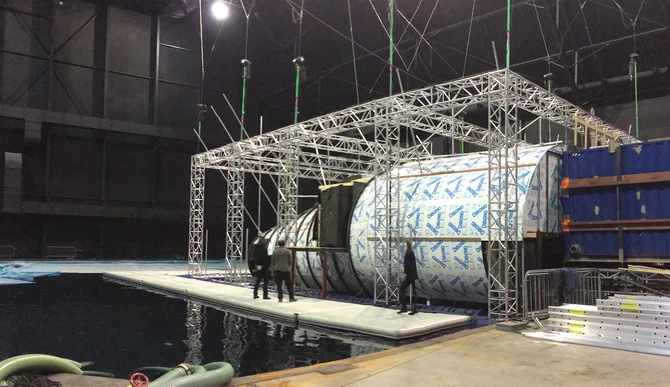
You don’t have many tanks in Europe that are inside, with filtered water, and big enough for such a project
Creating a visual language
A key part of the Flemish crew on Kursk was Wim Michiels of Cine Diving, who worked closely with Oscar-winning DoP Anthony Dod Mantle on the underwater camerawork.
“He wanted to have a language of underwater filming of his own,” Michiels recalls. “He was searching for a way to film it without having the same shots as other underwater films. That took us through a whole period of searching for cameras, lenses and lighting, and the way to use those underwater.”
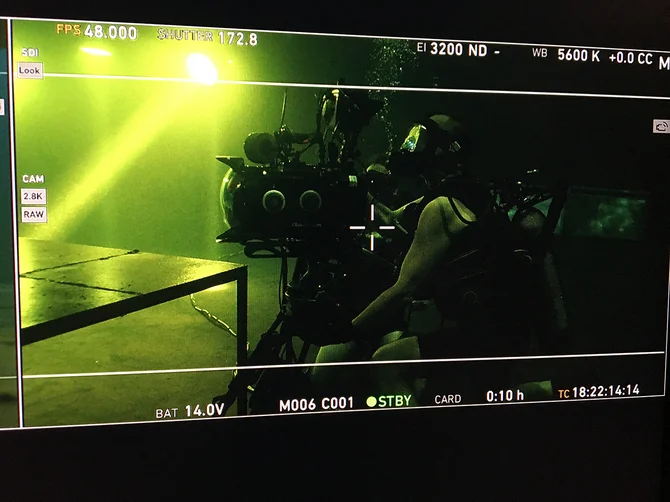
During the shoot, they communicated through an intercom, with Dod Mantle keeping up a constant stream of instructions. “He doesn’t tell you: ‘now left’ or ‘now right’, he gives you the right atmosphere. He is telling stories, and you have the freedom to interpret that. It’s a very special way of working.”
Another challenge came from scenes shot underwater in near darkness, where the actors were both submerged and unable to see properly. “Making the sets safe for the actors and filming safely with them was a big concern,” says Michiels. “For Kursk we did underwater training for 42 people: actors, stand-in divers, body doubles and some extras.”
Anthony Dod Mantle wanted to have a language of underwater filming of his own
State of Happiness
Cine Diving was also involved in State of Happiness, a TV series about the 1969 discovery of a massive oil field in the North Sea. Directed by Petter Næss, the series is produced by the Norwegian company Maipo Film and co-produced in Flanders by Lunanime, part of the Lumière group.
The collaboration is the fruit of Lumière’s long history as a distributor of Scandinavian series. When producer Jan De Clercq heard that State of Happiness was in the works, he was immediately attracted to the project.
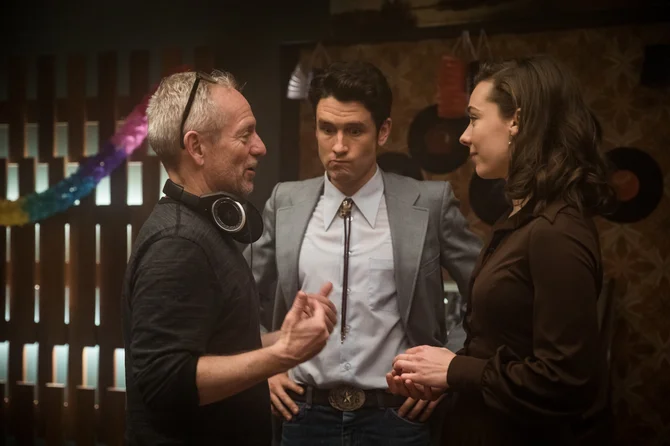
“It’s a series about the start of the oil industry and how it changed society in Norway. I think that’s something interesting that people will want to know about.”
It was also a chance for Lunanime to partner with one of Norway’s most experienced producers on a prestigious project. “I think State of Happiness has the biggest budget of any TV series made in Norway so far,” says De Clercq.
With the financial support of the Tax Shelter and Screen Flanders, plus its own contribution of a minimum guarantee as distributor, Lunanime was able to put together an attractive package bringing the studio work to AED.
Building the seabed
One of the main technical challenges was recreating the floor of the North Sea in AED’s tank. This had to be done without contaminating the water with free-floating sand, since replacing the water would have been time consuming and very expensive.
One idea was to build a sea floor on plates, which could then be lowered into the tank, but these would have been much too heavy. “So Kurt Loyens and his team in the art department developed a very interesting solution by gluing the sand onto sheets with latex. These could then be unrolled underwater,” says Head of Productions Tim Martens.
Another challenge was the diving bell that features in the underwater scenes. “It’s a replica of a diving bell that came from Norway, but it still weighed three tonnes, and it was not so obvious how to get this into position.”
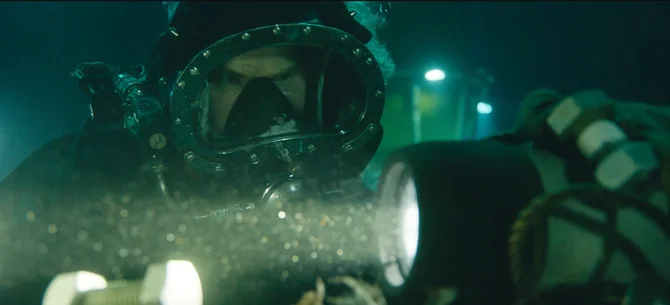
Tight schedules
All of the underwater shots needed to be completed in two days, a tight schedule typical for TV work. “You have to find a way to work rapidly, because the budgets are more limited, but they still want to tell the story in a nice way. So you have to find the way to get there,” says Michiels.
His solution, devised with DoP Lars Vestergaard, was to make a series of long sequence shots for each scene: first a general shot, then following the actor from the front, then over the shoulder, then in close-up. “We could do that because we had installed lighting that worked for all of those shots.”
This proved so effective that initial plans to limit the shoot were dropped. “In the end, it went so well that we were able to do the additional shots that had been skipped because we thought we didn’t have enough time,” Martens says.